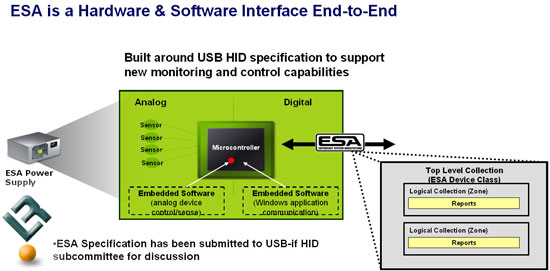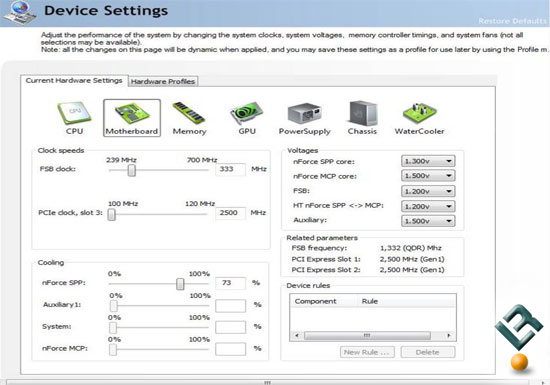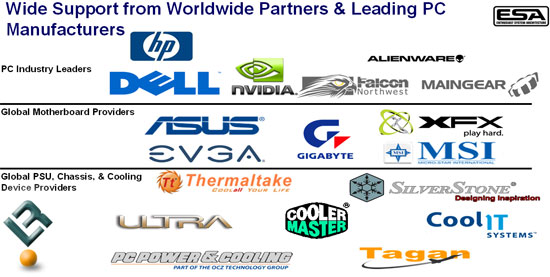NVIDIA Announces Enthusiast System Architecture
The Software Interface and Launch Partners

The ESA architecture is designed to facilitate a well-defined protocol for communicating information about sensors and controls within an ESA device. This communication is enabled by embedding a microcontroller into the enabled components. The microcontroller integrates a USB 2.0-compliant full speed device controller which is used as the primary communication channel between the PC motherboard and the ESA enabled component. The microcontroller is effectively a single chip implementation of the digital control portion of ESA. This design specification will mean that more internal USB ports will be used up, but most new motherboards support at least four internal USB devices.

If the chassis, power supply and/or water cooler supports ESA, the end user can enter the software utility and check out the available information and make changes (if needed).
NVIDIA also has a roadmap of sorts drawn up that shows where ESA will be in a couple years if all goes as planned. This year is all about tweaking and debugging the initial ESA devices that come to market, but it’s nice to see the final goal of a smart PC being just a number of years away.

Of course none of this would be possible without launch partners and NVIDIA has a number of big name companies that have already signed on to take on the new open standard. Part of the widespread support is since USB acts as the core interface and is already extremely well supported, designs remain simple and effective. In addition, NVIDIA offers vendors reference firmware to dramatically reduce the development cycle and bring products to market faster than ever before. Since NVIDIA offers this reference firmware free-of-charge, even smaller component vendors can offer ESA-certified components without having to invest a ton of money into it. It will be interesting to see where ESA will go, but we hope it takes off as having all this monitoring data in one place will be nice. Pretty soon we will be able to monitor the coil pack temperature in our power supplies thanks to this specification and computer builders and users will better know the inner workings of their systems. The days of not know what is going on in the system are gone! Thanks NVIDIA for stepping up to the plate and making ESA a reality and most of all an open standard.

Comments are closed.